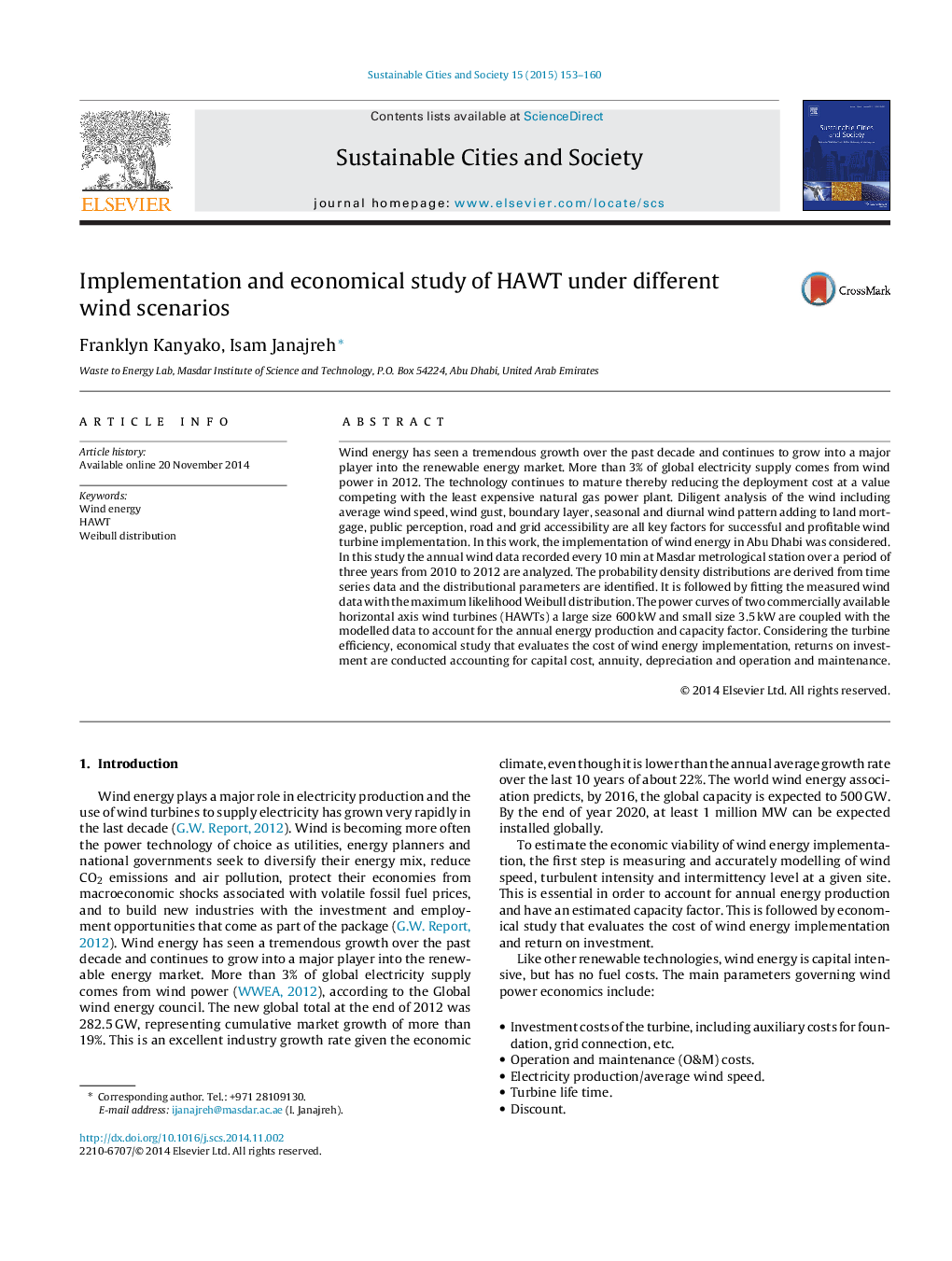| Article ID | Journal | Published Year | Pages | File Type |
|---|---|---|---|---|
| 6776516 | Sustainable Cities and Society | 2015 | 8 Pages |
Abstract
Wind energy has seen a tremendous growth over the past decade and continues to grow into a major player into the renewable energy market. More than 3% of global electricity supply comes from wind power in 2012. The technology continues to mature thereby reducing the deployment cost at a value competing with the least expensive natural gas power plant. Diligent analysis of the wind including average wind speed, wind gust, boundary layer, seasonal and diurnal wind pattern adding to land mortgage, public perception, road and grid accessibility are all key factors for successful and profitable wind turbine implementation. In this work, the implementation of wind energy in Abu Dhabi was considered. In this study the annual wind data recorded every 10Â min at Masdar metrological station over a period of three years from 2010 to 2012 are analyzed. The probability density distributions are derived from time series data and the distributional parameters are identified. It is followed by fitting the measured wind data with the maximum likelihood Weibull distribution. The power curves of two commercially available horizontal axis wind turbines (HAWTs) a large size 600Â kW and small size 3.5Â kW are coupled with the modelled data to account for the annual energy production and capacity factor. Considering the turbine efficiency, economical study that evaluates the cost of wind energy implementation, returns on investment are conducted accounting for capital cost, annuity, depreciation and operation and maintenance.
Keywords
Related Topics
Physical Sciences and Engineering
Energy
Renewable Energy, Sustainability and the Environment
Authors
Franklyn Kanyako, Isam Janajreh,
